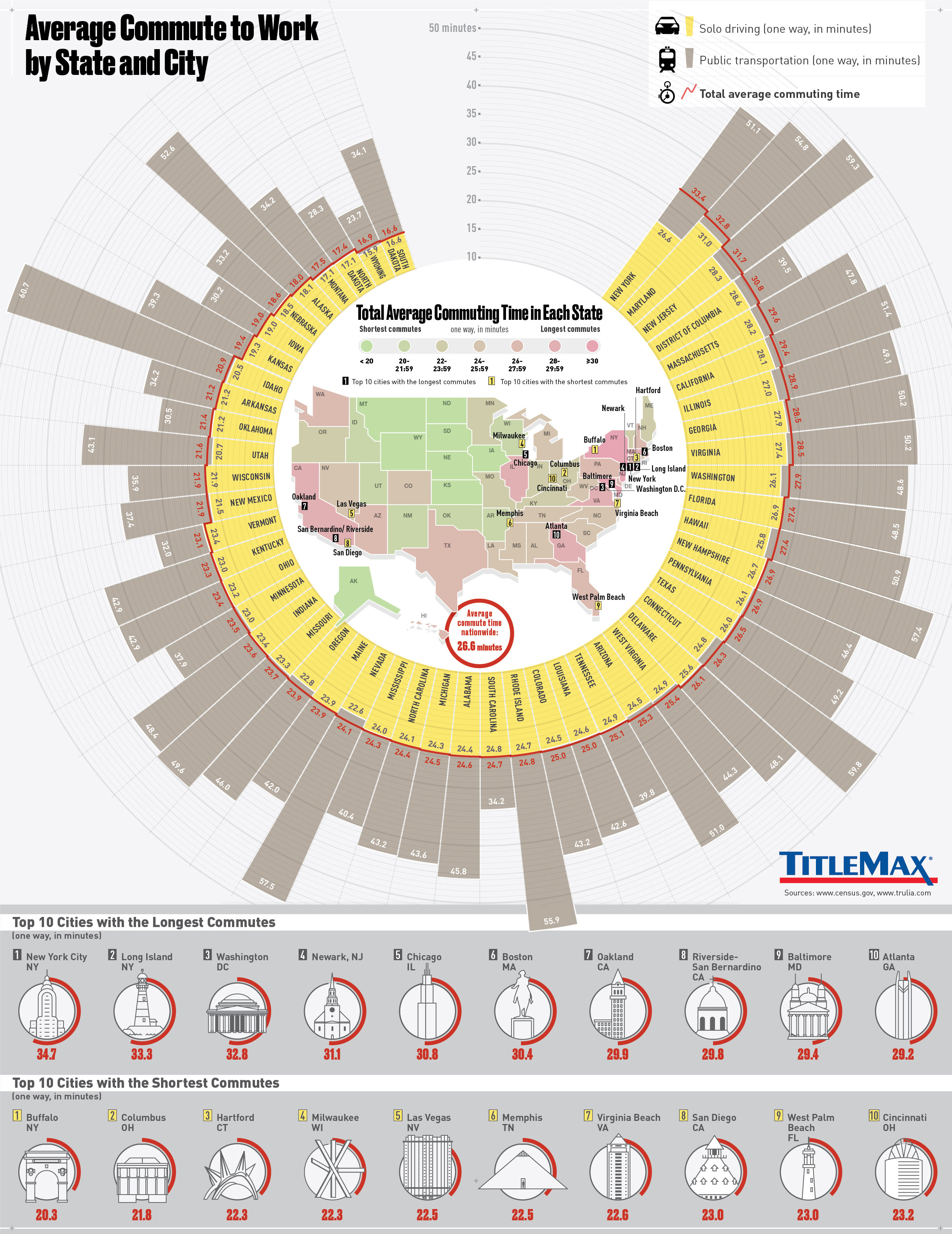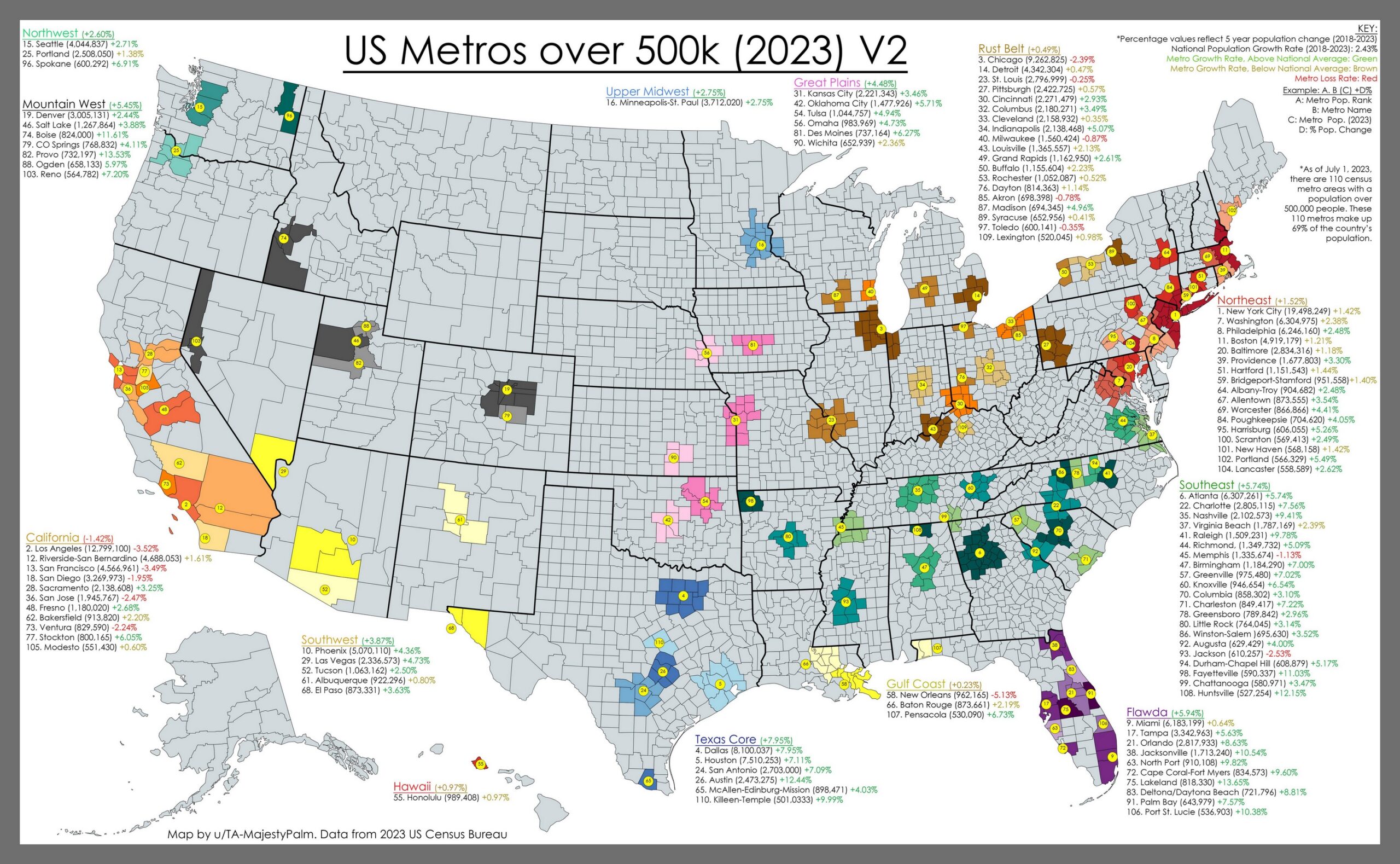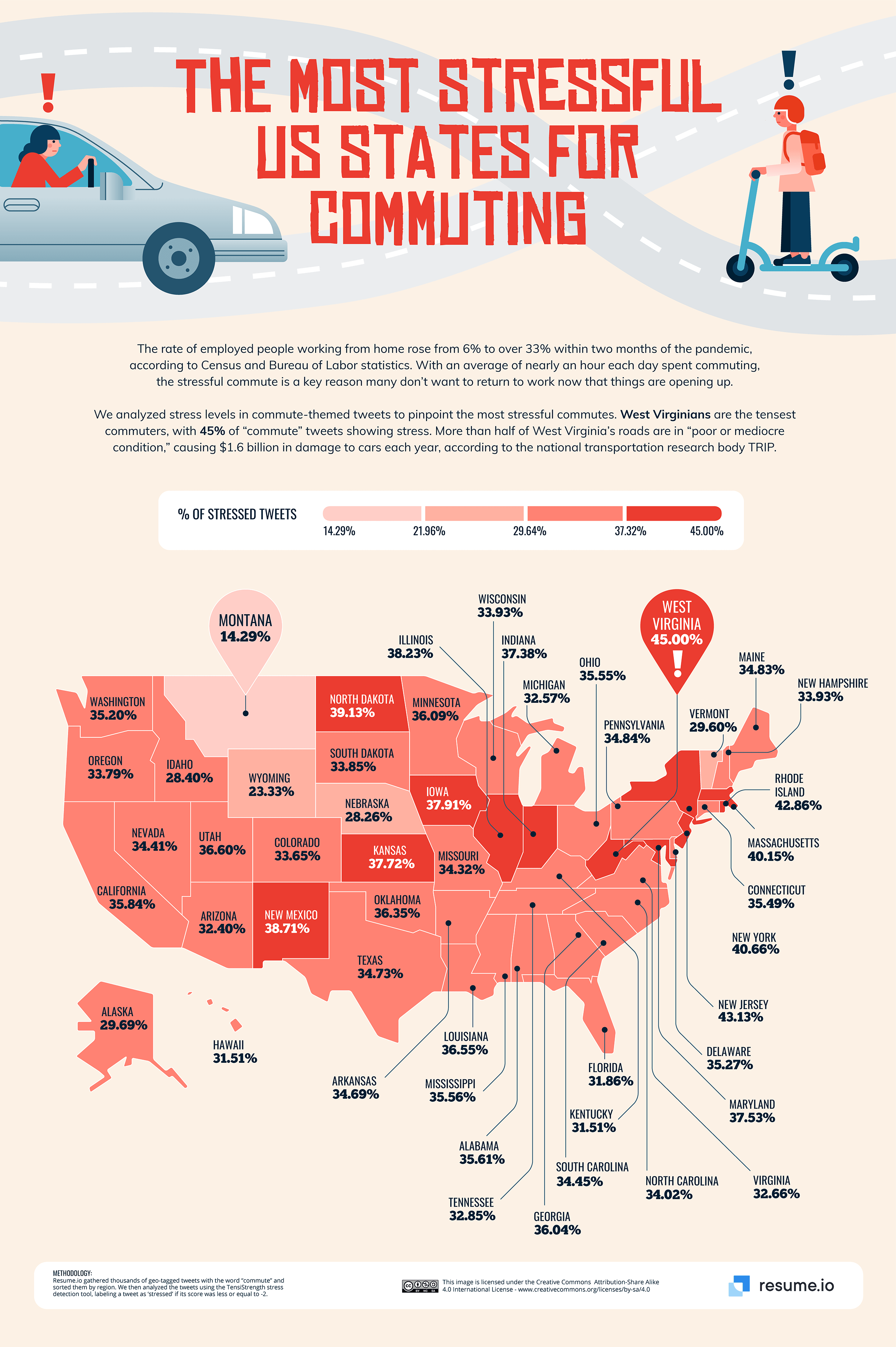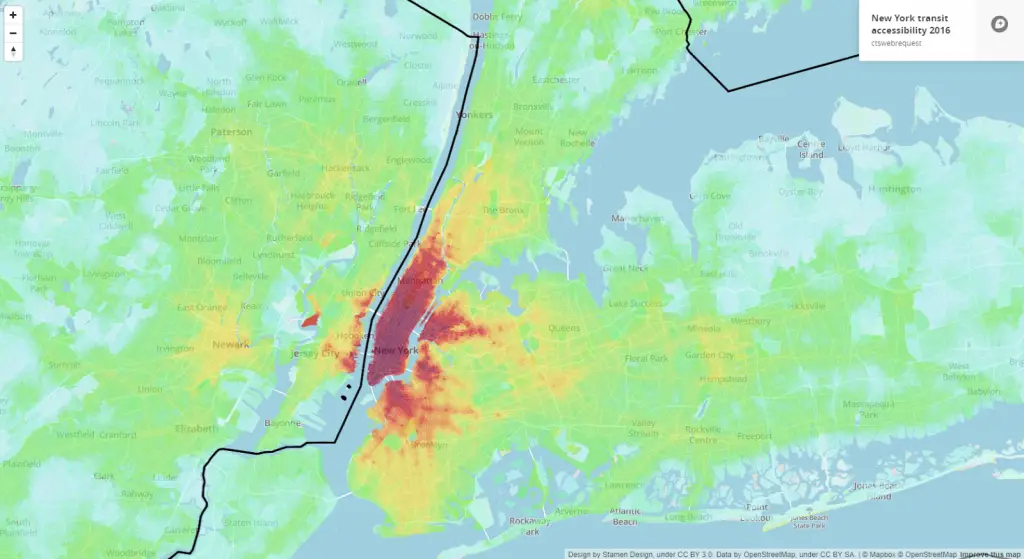Percent of US workers driving alone to work
The percentage of U.S. workers who drive alone to work provides insights into commuting habits and transportation trends in the country. Historically, a significant portion of the U.S. workforce has commuted to their workplaces by driving alone in private vehicles.
Regional variations are significant, with large metropolitan areas that boast extensive public transportation systems generally reporting lower rates of solo driving compared to rural regions with limited transit options. The percentage of workers driving alone to work can vary widely across the country.
The map below created by @academiaadvice using the U.S. Census Bureau (American Community Survey) data collected from 2012 to 2017 shows percentage of workers 16 and older who drive a car, truck or van alone to work by U.S. county.
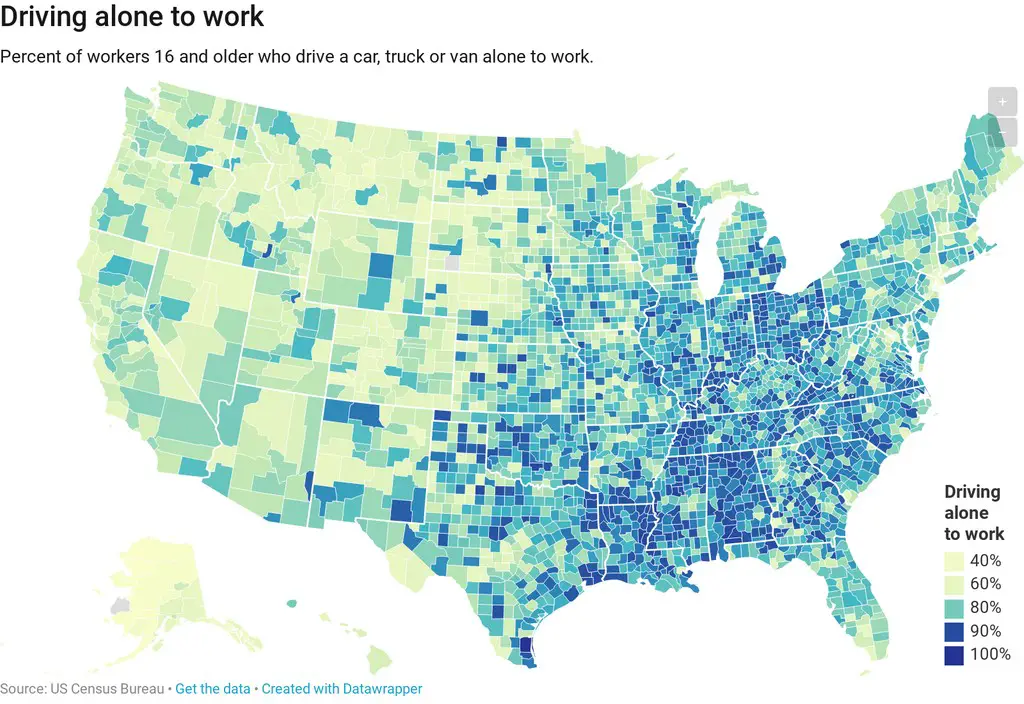
Top 10 U.S. counties with the highest
- Kenedy County, Texas – 100
- La Salle County, Texas – 95,2
- Lanier County, Georgia – 94,3
- Carroll County, Mississippi – 93,6
- East Carroll Parish, Louisiana – 92,9
- West Feliciana Parish, Louisiana – 92,9
- Jefferson County, Mississippi – 92,9
- Pendleton County, Kentucky – 91,5
- Norton city, Virginia – 91,4
- Conecuh County, Alabama – 91,4
- Wilkinson County, Mississippi – 91,4
- Pleasants County, West Virginia – 91,3
- Covington city, Virginia – 91,3
- Escambia County, Alabama – 91,2
- Hale County, Alabama – 91,1
- Posey County, Indiana – 91,1
Top 10 U.S. counties with the lowest
- Kusilvak Census Area, Alaska – 5,3
- New York County, New York – 7,4
- Northwest Arctic Borough, Alaska – 21
- North Slope Borough, Alaska – 21,4
- Aleutians East Borough, Alaska – 21,4
- Kings County, New York – 22,6
- Lake and Peninsula Borough, Alaska – 23
- Yukon-Koyukuk Census Area, Alaska – 23,9
- Bethel Census Area, Alaska – 26,9
- Bronx County, New York – 27,3
- Nome Census Area, Alaska – 28,8
- Hoonah-Angoon Census Area, Alaska – 34,4
Over the years, there has been a notable historical trend of a substantial portion of the U.S. workforce choosing to drive alone to their places of employment. This trend is often associated with the country’s sprawling suburban landscapes and a reliance on personal vehicles. It is particularly pronounced in areas where public transportation options are limited or less convenient.
The environmental impact of this commuting behavior is substantial. High rates of solo driving contribute to traffic congestion, air pollution, and greenhouse gas emissions. As a result, reducing the number of single-occupancy vehicles on the road has become a priority in many regions and cities across the nation, with a focus on promoting more sustainable modes of transportation.
Efforts to reduce solo driving include the promotion of carpooling, vanpooling, biking, walking, and the use of public transportation. Employers also increasingly offer telecommuting options and flexible work schedules to reduce the need for daily commuting. Additionally, urban planners and policymakers work to improve public transportation infrastructure, create bike lanes, and develop pedestrian-friendly pathways to encourage alternative commuting choices.


